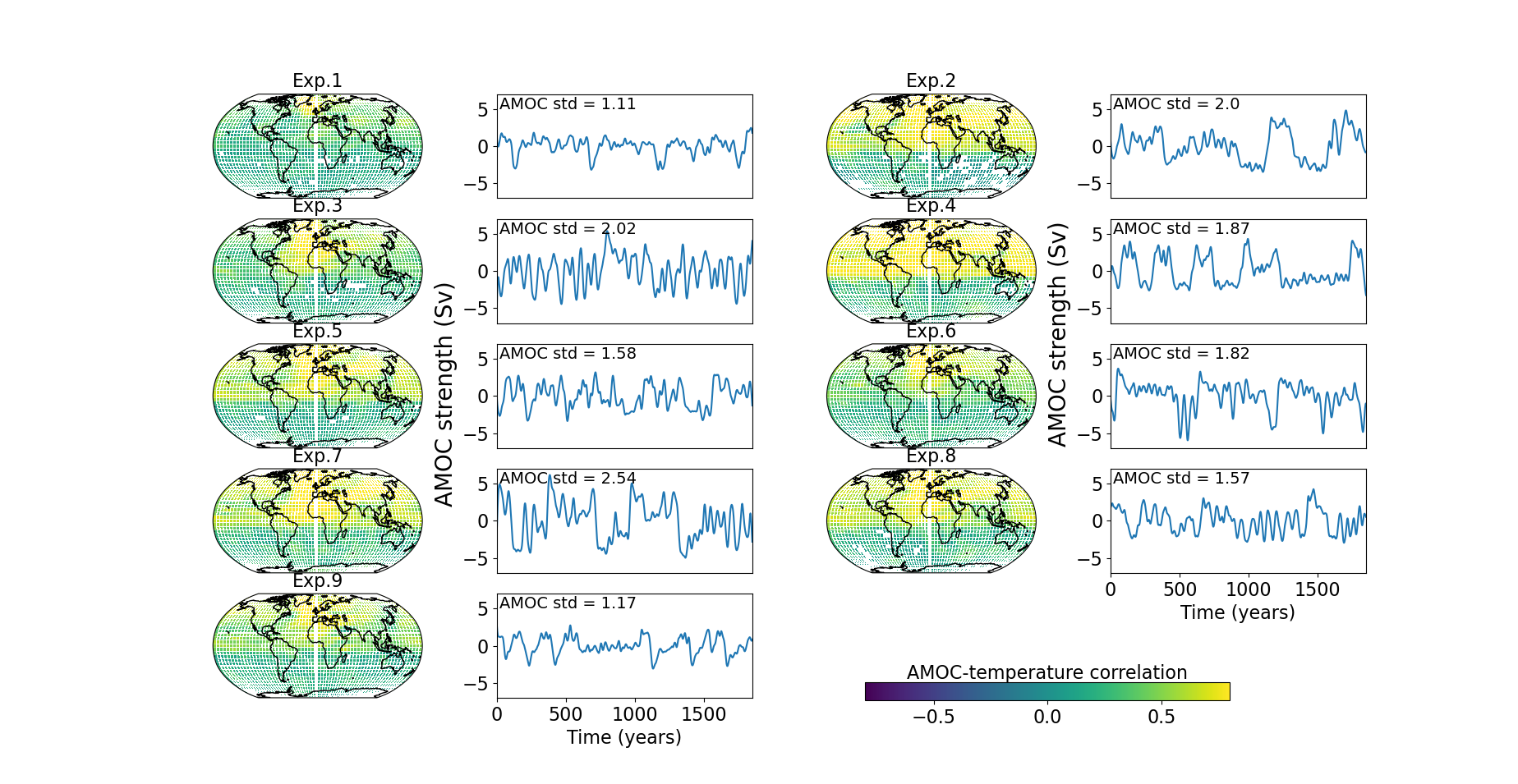Internal climate variability and spatial temperature correlations during the past 2000 years
Written by Pepijn Bakker no comments
Internal climate variability in a climate model is strongly dependent on the chosen model parameters. Using a perturbed parameter ensemble of the iLOVECLIM model, we show that the model can simulate centennial variability in the Atlantic Meridional Overturning Circulation that differs widely in terms of magnitude, frequency and the size of the region in which temperature variability is correspondingly impacted.The spatio-temporal structure of natural climate variability has to be taken into account when unraveling observed climatic changes and simulate future climate change. However, based on the comparison of temperature reconstructions and climate model simulations covering the past two millenia, it has been argued that climate models are biased. They would simulate too little temporal temperature variability and too high correlations between temperature time series from different continents. One of the proposed causes is the lack of internal climate variability in climate models on centennial time scales, for instance variability related to the Atlantic Meridional Overturning Circulation (AMOC).
We present a perturbed-parameter ensemble with the iLOVECLIM earth system model containing various levels of AMOC-related internal climate variability to investigate the effect on the spatio-temporal temperature variability structure. The model ensemble shows that indeed enhanced AMOC variability leads to more continental-scale temperature variability, but it also increases the spatio-temporal temperature correlations between different continents. However, combining the iLOVECLIM results with CMIP5 model results and various PAGES-2K temperature field reconstructions, we find that neither model results or reconstructions are robust. We show overall agreement for the magnitude of continental temperature variability in models and reconstructions, but both the simulated and the reconstructed ranges are large. This is even more true when considering higher order metrices like inter-continental temperature correlations or temperature variability land-sea contrasts. For such metrices, uncertainties in both model results and temperature reconstructions are so large that they hamper our ability to constrain simulated spatio-temporal structure of centennial temperature variability. As a result, we cannot determine the importance of AMOC variability for the climatic evolution over the past two millenia.

Photo: AMOC evolution and AMOC-temperature correlations. Figure 3 in publication
Link to publication: Bakker et al. 2022
Written by: Pepijn Bakker
Classified in : News Tags : CLIO, ECBilt